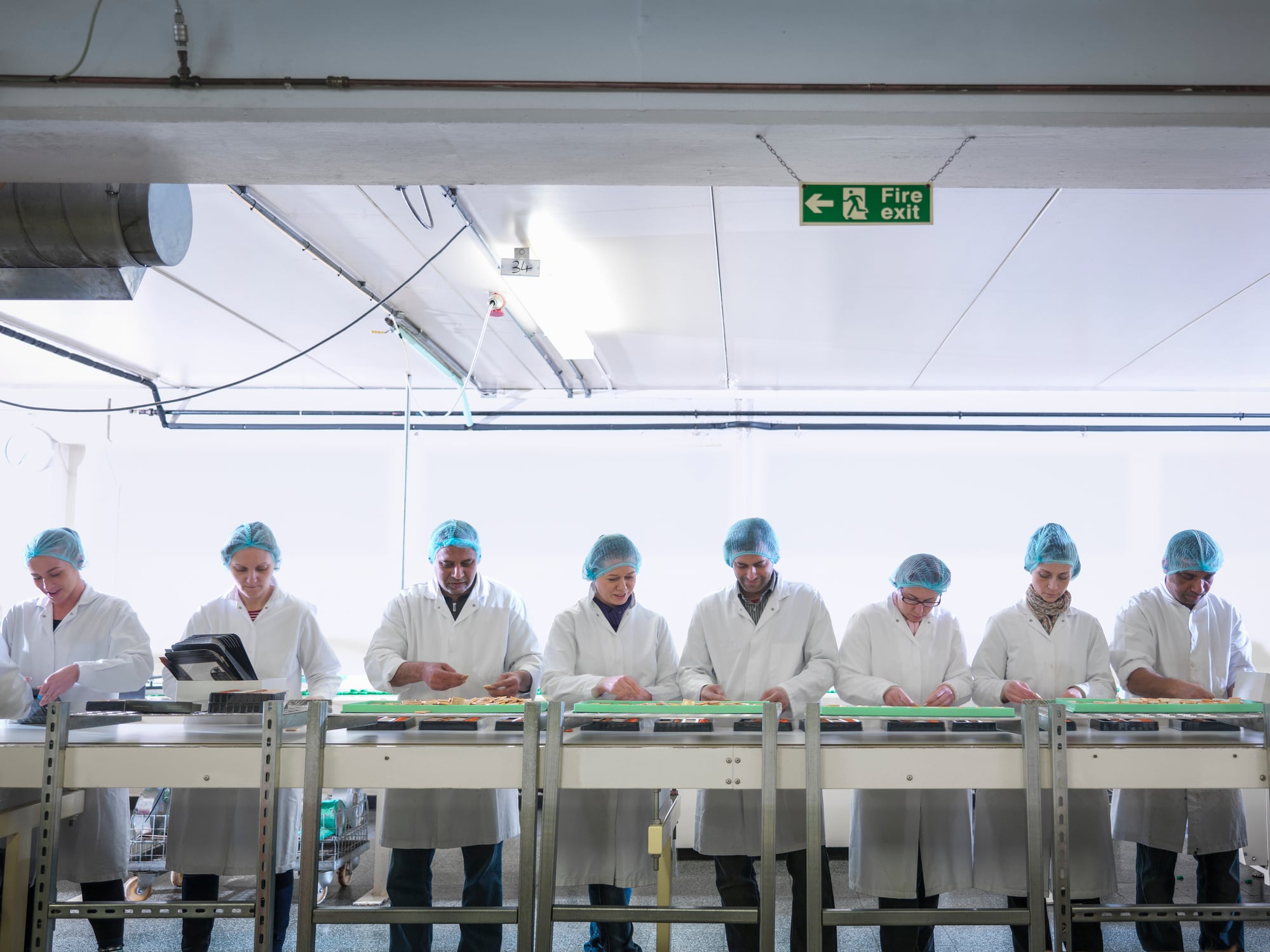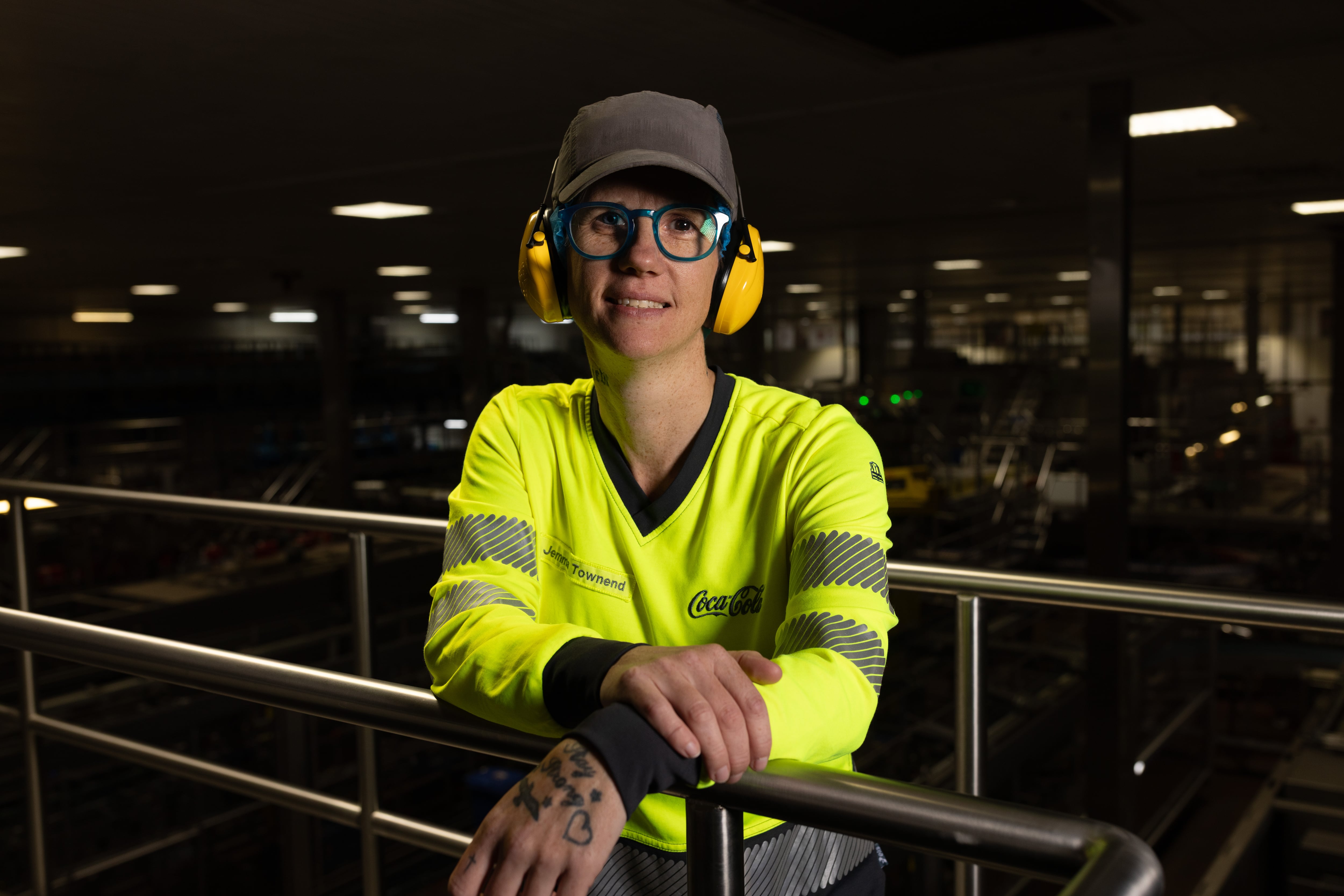How connected are your frontline teams to the wider business? Do they understand what a ‘good day’ looks like? What progression opportunities there are? Is your site a pleasant place to work with lots of amenities?
These are all key questions you should be asking your teams.
Meet the panel
Fran Ball, vice president of production at Arla Foods UK
Sharon Barlow, operations manager at Greencore
Ryan Marshall, global account director EMEA at QAD Redzone
Karl Probert, supply chain director, Coca-Cola Europacific Partners (CCEP)
1. A sense of community
One of the key takeaways from the recent Food Manufacture session (which can be view on-demand here) is that your frontline team needs to feel part of a community.
As Barlow said we need to make sure we’re “engaging” with and “recognising” workers “so they feel valued and important, just as much as other functions”.
Ball agreed, noting that town halls can be an excellent way to connect departments and not just communicate wider business strategy but explain how different roles – and individuals – play into new projects and the success of the company.
This, she added, is especially important for younger generations who are wanting “more than ever to feel connected to the bigger strategy”.
“Take the time in your business to make sure your frontline colleagues know how important their roles are within the business and supply chain,” she recommended.
What motivates me – it’s seeing the team develop, seeing individuals flourish and grow.
Fran Ball, vice president of production at Arla Foods UK
2. Set clear targets
A great way to motivate people is to ensure they know what their role is and their targets.
At Arla, this desire among employees was revealed during a recent engagement survey.
Ball explained: “One thing that was really clear was people want to know ‘what a good day looks like’ – what does performance look like on a day-to-day, hour to hour, so that then they know when they’ve had a good day and when they can be recognised and feel valued for achieving that. It’s really important to set those goals and targets first off.”
However, rather than showing a team member an OTIF metric (on-time-in-full) that might mean nothing to them, why not make it simpler using strong visual management techniques.
Marshall suggested: “Green is good, red is bad, you get a gold star if you’re above a certain target.”
This helps provide data literacy and to showcase, as Marshall put it, that “they have the aptitude” to progress in other roles which they may not have experience in.
“Give people at the front line the faculty and the ability to understand data and how they can influence it in their role and what it means to them, ergo, ‘I am having a good day on my workstation’, not just ‘is the plant having a good week or a bad week’,” he clarified.
“It’s so important to put it in that proper context because then people can take ownership of it.”
I’m motivated by sharing my experiences with others; helping them on their development journey and watching them flourish throughout, and building their confidence.
Sharon Barlow, operations manager at Greencore
3. Listen to your teams
In the past, Ball said the actions of the Arla engagement survey had been decided by management. Now, it’s very employee-led, with listening groups set up that enable actions to be decided by the teams it directly influences.
“Have those groups look at that information and feedback – understand what they want to do differently,” she encouraged. “They can be really small things, but they help to really get that ownership and feeling of ‘I’m being listened to and I’m not just being told what to do’.”
Marshall shared similar thoughts, highlighting the importance of meaningful, relevant goals rather than ‘management speak’.
CCEP’s Probert agreed, noting the importance of annual engagement surveys, but also said there’s no point in delaying action – get out there and talk to your teams.
“You don’t have to wait for the results before you act,” Probert ventured. “I like to clear out a day in my diary every week, where me and the leadership team, we spend time on the shop floor just interacting with people.
“And this isn’t about, what job they’re doing, the performance or what issues that may be across the line. [Instead,] we’re trying to connect with people and understand some of the constraints or frustrations that they may have within their day-to-day activities and how we can support and help them by making modifications.
“[This] ultimately allows them to be more motivated and drive better performance because everybody that comes to work wants to do a really good job.”
Ensuring work has purpose is crucial, with research from McKinsey showing that when employees find their work meaningful, it improves performance by 33%.
We also conducted our own research during the webinar and our findings echoed that of McKinsey’s.
Given four options, between money, progression, flexibility and meaningful work, 46.8% said the latter was the biggest motivator, followed by progression at 22.6%.
4. Opportunity for growth
Part of feeling valued and important is having the opportunity to grow and making these pathways visible.
For Greencore’s Barlow, she said a lot of it is about instilling confidence into frontline workers to step outside their comfort zone, and as all the panel referenced, giving them a platform to be able to develop.
“We need to make sure that we’re listening to the employees and understand what they want to want to do and how we can stretch them to maximise their full capability,” she said.
“The opportunities are endless in manufacturing and if you have got ‘want and desire’, you can develop and progress into any role.”
One of the tools CCEP has introduced is its career hub – an employee-led online platform that suggests learning connections, and internal vacancies and networking opportunities for all its employees.
“So if they want to learn about roles and they want to connect with employees that have the experience in that role they can,” said Probert.
But the business is also ensuring it invests into the teams’ learning and development, so they can grow their technical capabilities and help shape their own areas – this gives empowerment and therefore motivation, along with bring fresh ideas to the table.
Meanwhile, Ball said Arla is making sure to have conversations in one-to-ones about the future – asking team members where and how they want to progress within the company and ensuring those development plans are in place.
This is particularly important for younger generations, as Ball explained: “We’re seeing people being generally less loyal. So if I look at our turnover for our under 30s, it’s about 3% higher than our general turnover in our production areas.
“They want new, exciting things to do. We need to adapt and think how do we give people those opportunities [and more quickly than we did traditionally].”
Motivation for me really comes from the opportunity to support others in developing their skills, building strong team culture, achieving great results.
Karl Probert, supply chain director, CCEP
5. A nice working environment
No one wants to go to work in an uncomfortable environment – and whilst some of the work on frontlines can mean pretty hot or chilly facilities, it’s about making sure that the overall experience is as pleasant as possible. Whether that’s letting the team have music on, investing in better PPE (especially kit that is suitable for everyone – we’re human, we need to stop with this one size fits all approach!), or ensuring the rest of the facilities feature perks, such as decent coffee, ample fridge space, wellbeing and prayer rooms, etc.
“We are consistently focused on improving the working environment for our frontline colleagues, ensuring that the factory around them is fit for purpose so they feel they can deliver their best day at work,” said Probert on CCEP.
“One of the big ones that we’ve done recently was around staff shops,” added Ball. “So we had a really nice staff shop in our head office, so when colleagues came over for training or for a meeting, they would see it. But when they went back to their sites, they didn’t have one.
“That sounds very basic but actually enabling everyone to have access to our products every day at our sites in the same way that they do in head office – that was a really important thing for a lot of the sites.”
It’s really important to have opportunity for growth. I have to have a clear path towards the future. I really value a variety of responsibilities as well as the ability to make my own decisions and work autonomously.
Ryan Marshall, global account director EMEA at QAD Redzone
6. Be flexible
One of the big challenges manufacturing has is that it can’t really be done from home. Pre-Covid that wasn’t necessarily a big deal, but now as working patterns have evolved it’s important that the sector changes with it – as much as it’s able.
ONS data from 2022 showed that 78% of remote and hybrid workers say they have an improved work-life-balance and 47% say it’s improved their wellbeing - so by introducing flexibility to shifts, it’s likely to make the role more attractive.
It will also widen the talent pool up to parents. ONS data shows that during the first weeks of lockdown (28 March to 26 April 2020), in households with children aged under 18 years, women were carrying out on average two-thirds more of the childcare duties per day than men. After the pandemic, many of those women didn’t return to the industry and whilst the numbers of females in board positions have increased, those in entry roles have declined.
As previously reported in Food Manufacture, one of the ways to entice women (and any parent or guardian!) back into the sector is to offer more flexibility. Then, once more women are enticed into these entry roles, make sure there is support in place for career progression.
Moreover, our findings from our poll during the webinar (results above) showed that 16.1% valued flexibility, finding it to be a motivator over money (14.5%).
Ball admitted that flexibility isn’t something the industry has cracked yet, but she’s optimistic that it’s only a matter of time, with technology and automation lending a helping hand.
“For me, this is a real unlock – getting more reliable equipment, more automated equipment, so we need less of those repetitive roles. [That way] we make them more flexible roles, more interesting roles, and we can then appeal to a much more diverse pool of people.”





